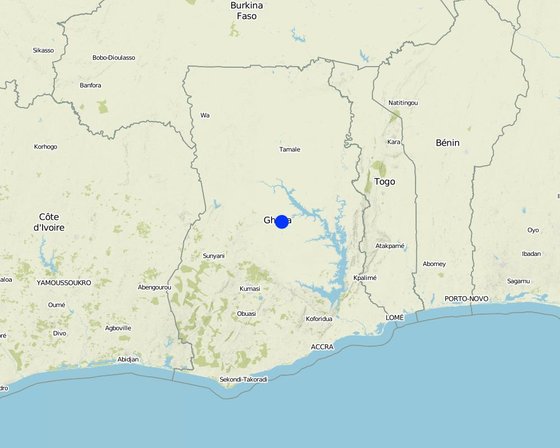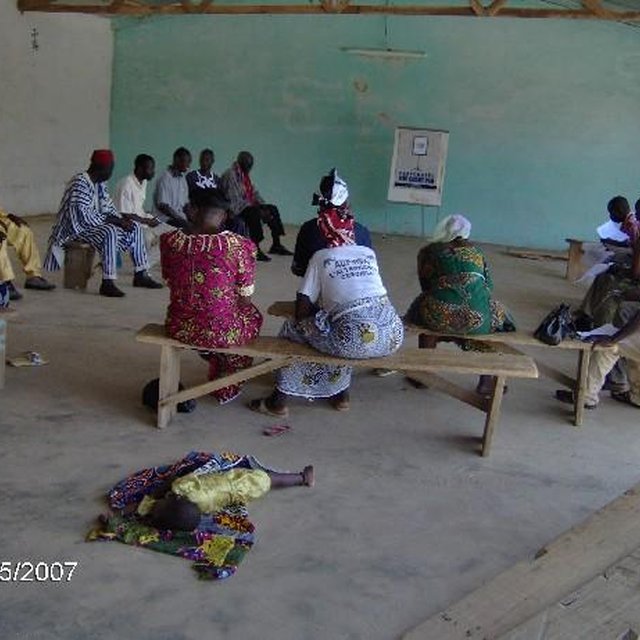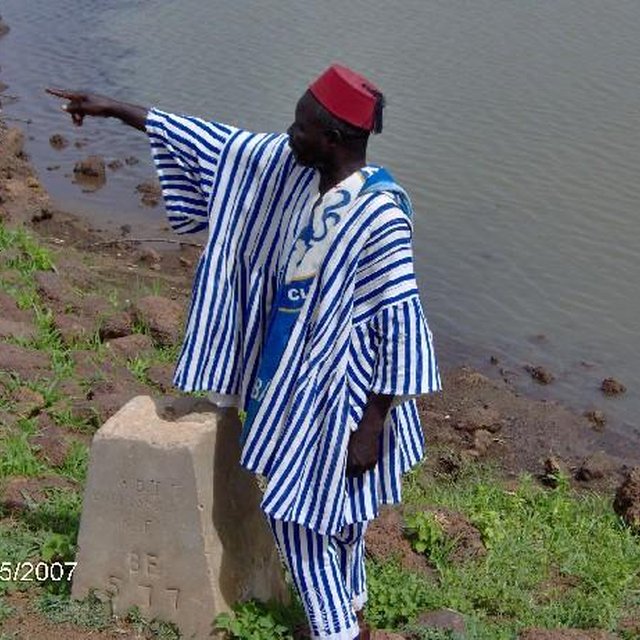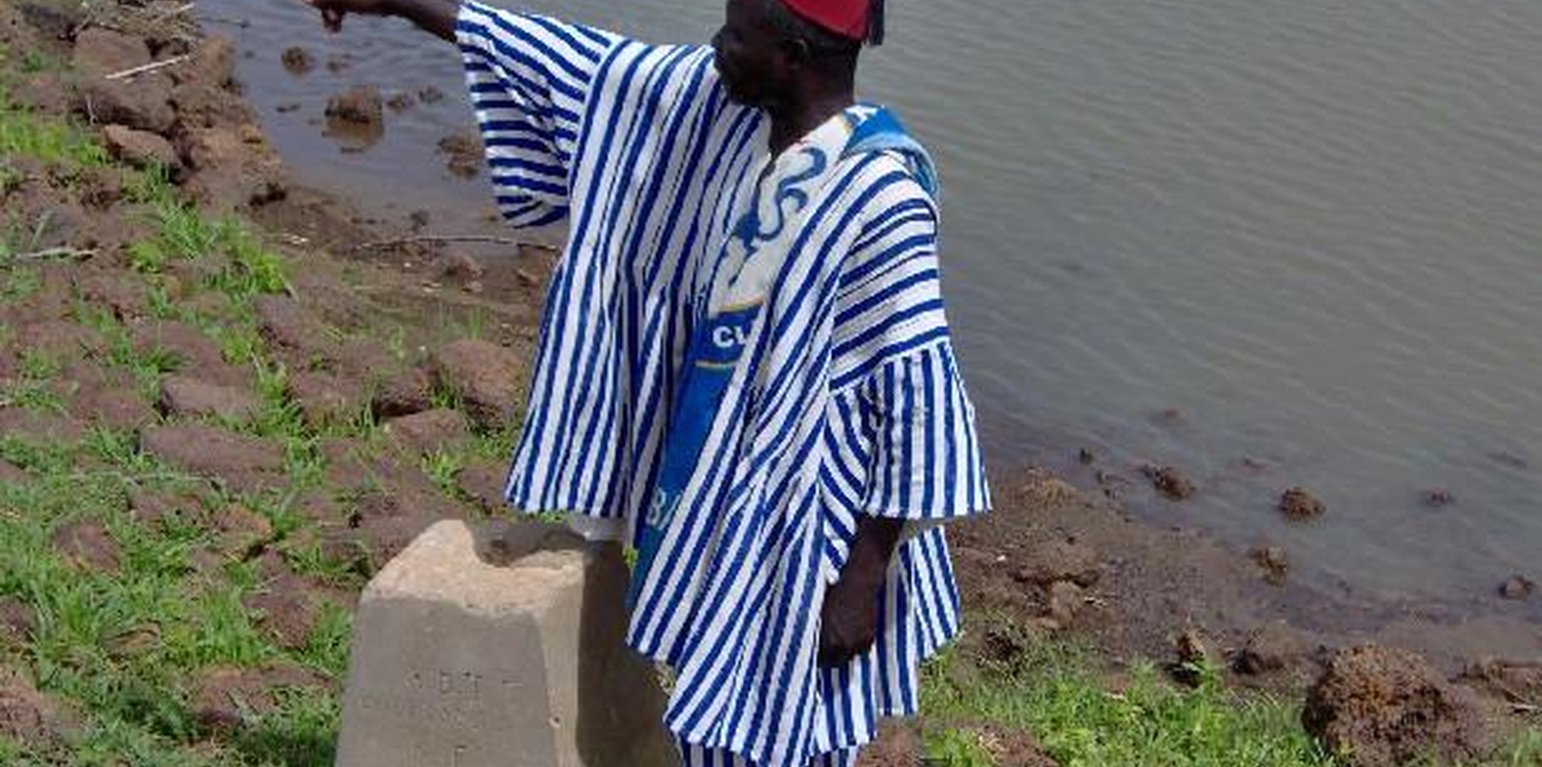Participatory Negotiated Territorial Development
(Ghana)
Descripción
Participatory Negotiated Territorial Development (PNTD) is a rural development approach developed by FAO.
Aims / objectives: It offers a structure to build consensus among individual communities and development partners on natural resources/territorial management and development issues. PNTD facilitates consensus based planning within a team that represents different actors at different levels, including sector offices / technical services (agriculture, environment, etc.) and NGOs (involved in community-based rural development) at district/ department/ municipality level; and traditional authorities, user groups and associations at community/ village level.
Methods: During the diagnostic phase of the PNTD process, local territorial issues are analysed based on the viewpoints of the different actors and on a historical analysis. This step contributes to a coherent, shared understanding of the territorial system, thus providing the basis for collective agreements on development. These are referred to as Social Territorial Agreements. They are based on negotiation within the PNTD team. Main activities of PNTD include: (1) Facilitation of the planning process; (2) Provision of technical expertise; (3) Linkages to relevant institutions; (4) Technical advisory to assess viability and costs of joint development proposals; (5) Reporting back to communities and provision with final plans and resource maps; (6) Signing of ‘Social Territorial Agreements’ and endorsement by local government; (7) Establishment of a joint monitoring and evaluation system; and (8) Follow-up meetings between government institutions and NGOs.
Other important information: Independent external support by territorial facilitators is essential to assist in various aspects of the process. A PNTD approach was piloted within a project in the Onchocerciasis (riverblindess) Freed Zone along the Burkina Faso-Ghana border. This newly opened zone lacked a well defined, accepted management structure to support the development process, while cross-border aspects further complicated development, requiring cooperation among the communities and development partners from both countries. The PNTD team was supported by facilitators from the Netherlands Development Organisation (SNV). The team’s capacity to carry out inclusive planning processes has improved significantly, in terms of proposal development, negotiation and consensus building, and in placing the findings of the diagnostic phase in the larger geographical context. Joint development plans were elaborated and agreed upon from the perspective of the communities. FAO has been supporting the exercise through technical backstopping.
Lugar

Lugar: Ghana and Burkina Faso, Ghana
Georreferencia de sitios seleccionados
Dato de inicio: n.d.
Año de conclusión: n.d.
Tipo de Enfoque
-
tradicional/ local
-
iniciativa local reciente/ innovadora
-
proyecto/ basado en un programa

Dialogue, negotiation and consultation the most significant elements of PNTD

PNTD can help tackle problems related to territorial disputes and natural resource management
Metas del Enfoque y entorno facilitador
Propósitos/ objetivos principales del Enfoque
The Approach focused mainly on SLM with other activities (a road to link two communities directly)
Testing a PNTD approach for local (transboundary) territorial planning; Refining the methodological process; Preparing a joint development plan for the two areas in Ghana and Burkina Faso
The SLM Approach addressed the following problems: Limited commitment from central governments; Cross-border planning proved to be considerably more expensive than regular planning activities
Condiciones que facilitan la implementación de la/s Tecnología/s aplicadas bajo el Enfoque
Condiciones que impiden la implementación de la/s Tecnología/s aplicadas bajo el Enfoque
Participación y roles de las partes interesadas involucradas
Partes interesadas involucradas en el Enfoque y sus roles
| ¿Qué partes interesadas/ entidades implementadoras estuvieron involucradas en el Enfoque? |
Especifique las partes interesadas |
Describa los roles de las partes interesadas |
| usuarios locales de tierras/ comunidades locales |
Community leaders |
|
| ONG |
SNV |
|
| gobierno nacional (planificadores, autoridades) |
|
|
| organización internacional |
|
|
Involucramiento de los usuarios locales de tierras/ comunidades locales en las distintas fases del Enfoque
ninguno
pasivo
apoyo externo
interactivo
auto-movilización
La toma de decisiones en la selección de Tecnología MST
Las decisiones fueron tomadas por
-
solamente usuarios de tierras (autoiniciativa)
-
principalmente usuarios de tierras con el apoyo de especialistas MST
-
todos los actores relevantes, como parte de un enfoque participativo
-
principalmente por especialistas MST en consulta con usuarios de tierras
-
solo por especialistas MST
-
por políticos/ líderes
La toma de decisiones se basa en
-
la evaluación de conocimiento MST bien documentado (la toma de decisiones se basa en evidencia)
-
hallazgos de investigaciones
-
la experiencia personal y opiniones (no documentadas)
Apoyo técnico, fortalecimiento institucional y gestión del conocimiento
Las siguientes actividades o servicios fueron parte del enfoque
-
Construcción de capacidades / capacitación
-
Servicio de asesoría
-
Fortalecimiento institucional (desarrollo institucional)
-
Monitoreo y evaluación
-
Investigación
Construcción de capacidades/ capacitación
Se proporcionó capacitación a las siguientes partes interesadas
-
usuarios de tierras
-
personal de campo/ consejeros
Forma de capacitación
-
en el contexto de trabajo
-
de agricultor a agricultor
-
áreas de demostración
-
reuniones públicas
-
cursos
Temas avanzados
Training focused on: (1) the PNTD process and its application in the context of cross-border natural resource management; (2) PRA tools relevant to the diagnostic phase; (3) participatory resource mapping (a tool to support the negotiation on development proposals)
Servicio de asesoría
Se proporcionó servicio de asesoría
-
en los campos de los usuarios de tierras
-
en centros permanentes
This approach focuses on establishing and maintaining social dialogue within the territory and restructuring and/or strengthening territorial institutions.
Financiamiento y apoyo material externo
Presupuesto anual en dólares americanos para el componente MST
-
< 2,000
-
2,000-10,000
-
10,000-100,000
-
100,000-1,000,000
-
> 1,000,000
Precise annual budget: n.d.
Los siguientes servicios o incentivos fueron proporcionados a los usuarios de las tierras
-
Apoyo financiero/material proporcionado a los usuarios de tierras
-
Subsidios para insumos específicos
-
Crédito
-
Otros incentivos o instrumentos
Análisis de impacto y comentarios de conclusión
Impactos del Enfoque
No
Sí, un poco
Sí, moderadamente
Sí, mucho
¿El Enfoque ayudó a los usuarios de tierras a implementar y mantener Tecnologías MST?
improved soil conservation and livestock rearing
Did other land users / projects adopt the Approach?
Invoked a high level of interest within the targeted communities; increased active participation, planning and consensus building capacity at community level
Motivación principal del usuario de la tierra para implementar MST
-
producción incrementada
-
incremento de la renta(bilidad), proporción mejorada de costo-beneficio
-
reducción de la degradación de la tierra
-
reducción del riesgo de desastres naturales
-
carga de trabajo reducida
-
pagos/ subsidios
-
reglas y reglamentos (multas)/ aplicación
-
prestigio, presión social/ cohesión social
-
afiliación al movimiento/ proyecto/ grupo/ redes
-
conciencia medioambiental
-
costumbres y creencias, moral
-
conocimiento y capacidades mejorados de MST
-
mejoramiento estético
-
mitigación de conflicto
Sostenibilidad de las actividades del Enfoque
¿Pueden los usuarios de tierras sostener lo que se implementó mediante el Enfoque (sin apoyo externo)?
The PNTD-approach has shown applicability. Yet, there are some aspects which need to be considered: (Local) governments need to take ownership of the cross-border planning and development processes. This could be realized by structuring external support differently: (1) Local government (districts, municipalities) supported by NGO’s are responsible to carry out all activities; (2) External (project) support focuses on overall coordination, the provision of technical advice, the provision of op
Conclusiones y lecciones aprendidas
Fortalezas: perspectiva del usuario de tierras
Fortalezas: punto de vista del compilador o de otra persona recurso clave
-
Provides a suitable framework for cross-border planning in the West African context
-
PNTD process raised the level of participation of local government institutions and NGO’s in a negotiated territorial development process through the PNTD team which comprised technical staff of these organizations.
-
PNTD enabled (and stimulated) the communities on both sides of the border to interact and joint development plans were elaborated and agreed upon from the perspective of the communities.
-
Looking beyond community boundaries, and consensus building between communities and stakeholders were new aspects of planning to the team members
Debilidades/ desventajas/ riesgos: perspectiva del usuario de tierrascómo sobreponerse
Debilidades/ desventajas/ riesgos: punto de vista del compilador o de otra persona recurso clavecómo sobreponerse
-
It took time for team members to grasp the conceptual approach of PNTD. They were used to working within individual communities, and if they were involved in planning then mostly at a diagnostic level.
-
Language problems required almost continuous translation, and thus effectively doubling the time required
recruitment of linguistic mediator(s) need to be considered in the project budget
Referencias
Fecha de la implementación: 14 de febrero de 2011
Últimas actualización: 18 de julio de 2017
Personas de referencia
-
Philippe Zahner (philippe.zahner@deza.admin.ch) - Especialista MST
-
Paolo Groppo (paolo.groppo@fao.org) - Especialista MST
-
Carolina Cenerini (carolina.cenerini@fao.org) - Especialista MST
Descripción completa en la base de datos de WOCAT
La documentación fue facilitada por
Institución
- Food and Agriculture Organization of the United Nations (FAO) - Italia
- Swiss Agency for Development and Cooperation (DEZA / COSUDE / DDC / SDC) - Suiza
Proyecto
Referencias claves
-
FAO. 2005. An approach to rural development: Participatory and Negotiated Territorial Development (PNTD). Rural Development Division, FAO. OFZ Project (Socio Economic Development Programme for the Transborder Onchocerciasis Freed Zone of Burkina Faso and Ghana):
-
SNV Burkina Faso - SNV Ghana. 2007. X-border Participatory, Negotiated, Territorial Development (PNTD) – pilot phase report.:






